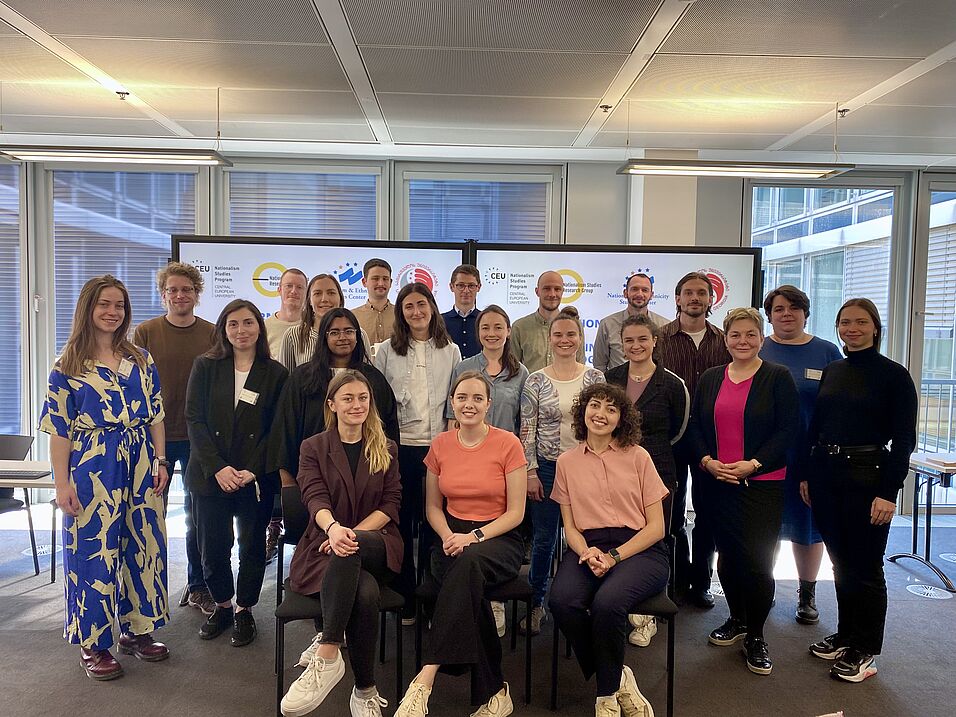Marta Cambronero Garbajosa presented two case studies from Spanish Twitter on Hate speech, freedom of speech, and contentious politics.
The potential quick spread of hate speech in the current digitalized and converged public sphere is a key threat to democracy. There are several studies focused on understanding the semantics and scope of hate speech. However, there is a lack of studies that focus on understanding the gatekeeping mechanisms present in the public sphere aimed to curb the spread of hate speech. While some hate episodes do not reach audiences beyond the far-right public, some others do; and, when this happens, public social actors have a chance to challenge them. Marta analyzed two cases of contentious media events in Spain where hate speech emerged online; both were popularized on social media; and both had an impact on media outlets too. She found that not only do far-right supporters spread hate speech, but human rights defenders also do it in their own way for the benefit of their tactics. In the first case, they condemned direct hate speech against a woman at the cost of reproducing symbolic racism against an immigrant. In the second case, they proactively exposed a reframed piece of hate speech with the objective of publicly shaming its author. One of the conclusions is that wide societal learning on how to collectively intervene in hate speech complex affective “powers” might be an alternative to excessively restrictive policies on freedom of expression.
Frederik Henriksen presented novel work on far-right mainstreaming in digital alternative news environments from 2019-2022 in Austria, Denmark, Germany, and Sweden. It is a research project that uses multilingual language transformers to classify far-right discourses and anti-system stances based on cross-platform social media data.
Mainstreaming of far-right discourse and anti-system stance in digital networked environments has become a central issue in political sociology and political communication. In this study, Frederik proposes an empirical design to study how the laundering of far-right discourse and anti-system stance takes place through processes of integration and disintegration of anti-system counter-publics in digitally networked information environments. The study builds on the data from an already conducted study on the fringe and mainstream digital alternative news environments. Ten classifiers are constructed and trained to identify forms of contestation and opposition to mainstream actors and political adversaries in social media posts by members of anti-system counter-publics. This paper contributes a) to research on the spread and mainstreaming of far-right ideology and cultural politics in the digital age, and b) to research on social media from a multi- and cross-platform perspective.
Azade Kakavand presented her research on Analyzing Radical Visuals at Scale: How Far-Right Groups Mobilize on TikTok. This is a project with Julian Hohner and Sophia Rothut.
The research study explored radical visual communication on the popular platform TikTok, particularly examining the mobilization strategies of far-right groups. The researchers presented a new methodology that combined manual annotation, unsupervised image classification, and text extraction to analyze the dynamics of radical visuals on a large scale. They differentiated between internal and external mobilization efforts of far-right groups on TikTok and used measures of popularity and engagement to investigate their effectiveness within and outside their community. The findings highlighted the unique characteristics and strategies employed by different far-right groups on the platform. While Conspiracists flourish in terms of overall popularity and internal mobilization, nationalist and protest content succeeds by using a variety of persuasive visual content to attract and engage external audiences. The study aimed to bridge the gap between visual political communication and radicalization research, providing valuable insights for policymakers, researchers, and online platforms to develop proactive measures against the spread of extremist ideologies on social media.
Ahrabhi Kathirgamalingam talked about her work on Exploring the Long-Term Dynamics of Racism in German Far-Right Alternative News Media. Her co-Authors are Fabienne Lind and Hajo G. Boomgaarden
The research project aims to investigate the long-term dynamics of racist language in alternative news media of the far-right in Germany. As racism is a crucial element of far-right ideology, the study seeks to analyze how news outlets reproduce and perpetuate it in the form of more manifest language. To trace terms and phrases that are tied to racist narratives of the far-right, a dictionary-based approach was employed, combining various dictionaries and a survey in which participants submitted terms and phrases they defined as racist. The validated dictionary was applied to a large dataset of news articles from three different alternative news media outlets in Germany from 2008 to 2022. The results show that racist language is highly prevalent in these news media. The results allowed the team to look into dynamics over time, especially around 2015, and into differences between the selected outlets. Further, they find that the dictionary terms' particularity is very context-dependent. During the conference, the discussion focused on the many challenges of automated text analysis, such as detecting humor or sarcasm in text data.

